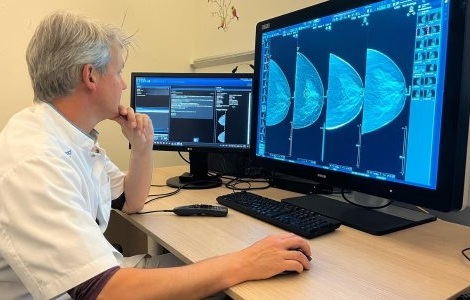Tau Radiotracer Aids Alzheimer's Disease Diagnosis
|
By MedImaging International staff writers Posted on 11 Jun 2020 |
A novel diagnostic radiotracer can help estimate the density and distribution of aggregated tau neurofibrillary tangles (NFTs) in adults being evaluated for Alzheimer’s disease (AD).
Developed by Avid Radiopharmaceuticals (Philadelphia, PA, USA), a wholly owned subsidiary of Eli Lilly (Indianapolis, IN, USA), Tauvid (flortaucipir 18F) radiotracer is a small-molecule selective positron emission tomography (PET) imaging agent that binds to aggregated tau protein, which in the brains of patients with AD, combine to form NFTs, one of the two components required for the neuropathological diagnosis of AD. The safety and effectiveness of the tau tracer were demonstrated in two clinical studies.
The first study included 156 terminally ill patients who agreed to undergo Tauvid PET imaging and to donate their brains after death; 64 died within nine months of brain scanning. Five evaluators' readings were then compared to post mortem readings from independent pathologists, who were blinded to the PET scan results. The results showed that the five evaluator’s readings had a high probability of correctly evaluating patients with tau pathology and had an average-to-high probability of correctly evaluating patients without tau pathology.
The second study included the same patients with terminal illness that participated in the first study, but with an additional 18 patients with terminal illness and 159 patients with cognitive impairment who were being evaluated for AD. In this second study, reader agreement was 0.87 across all 241 patients. In a separate subgroup analysis that included the 82 terminally ill patients who were diagnosed after death and the 159 patients with cognitive impairment, reader agreement was 0.90 for the AD patients and 0.82 in the terminally ill patients.
“The fight against Alzheimer’s disease requires precise and reliable assessments of the two key pathologies of the disease, because clinical assessments alone are limited in their ability to accurately diagnose patients,” said Mark Mintun, MD, vice president of Lilly's pain and neurodegeneration research and development. “Lilly and Avid Radiopharmaceuticals are committed to bringing innovative AD diagnostics to the patients who need them most.”
“Diagnostic imaging can help patients and their families plan for the future and make informed choices about their health and well-being, in addition to facilitating appropriate patient management for physicians,” said professor of neurology Reisa Sperling, MD, of Harvard Medical School (Boston, MA, USA). “Determining the anatomic distribution and density of tau NFTs in the brain was previously possible only at autopsy. Now we have a way to obtain this important information in patients.”
18F is a fluorine radioisotope that decays by positron emission 97% of the time, and electron capture 3% of the time; both modes of decay yield stable oxygen-18 (18O). 18F is an important radioisotope as a result of both its short half-life and the emission of positrons when decaying. It is primarily synthesized into fluorodeoxyglucose (FDG) for use in PET scans.
Related Links:
Avid Radiopharmaceuticals
Eli Lilly
Developed by Avid Radiopharmaceuticals (Philadelphia, PA, USA), a wholly owned subsidiary of Eli Lilly (Indianapolis, IN, USA), Tauvid (flortaucipir 18F) radiotracer is a small-molecule selective positron emission tomography (PET) imaging agent that binds to aggregated tau protein, which in the brains of patients with AD, combine to form NFTs, one of the two components required for the neuropathological diagnosis of AD. The safety and effectiveness of the tau tracer were demonstrated in two clinical studies.
The first study included 156 terminally ill patients who agreed to undergo Tauvid PET imaging and to donate their brains after death; 64 died within nine months of brain scanning. Five evaluators' readings were then compared to post mortem readings from independent pathologists, who were blinded to the PET scan results. The results showed that the five evaluator’s readings had a high probability of correctly evaluating patients with tau pathology and had an average-to-high probability of correctly evaluating patients without tau pathology.
The second study included the same patients with terminal illness that participated in the first study, but with an additional 18 patients with terminal illness and 159 patients with cognitive impairment who were being evaluated for AD. In this second study, reader agreement was 0.87 across all 241 patients. In a separate subgroup analysis that included the 82 terminally ill patients who were diagnosed after death and the 159 patients with cognitive impairment, reader agreement was 0.90 for the AD patients and 0.82 in the terminally ill patients.
“The fight against Alzheimer’s disease requires precise and reliable assessments of the two key pathologies of the disease, because clinical assessments alone are limited in their ability to accurately diagnose patients,” said Mark Mintun, MD, vice president of Lilly's pain and neurodegeneration research and development. “Lilly and Avid Radiopharmaceuticals are committed to bringing innovative AD diagnostics to the patients who need them most.”
“Diagnostic imaging can help patients and their families plan for the future and make informed choices about their health and well-being, in addition to facilitating appropriate patient management for physicians,” said professor of neurology Reisa Sperling, MD, of Harvard Medical School (Boston, MA, USA). “Determining the anatomic distribution and density of tau NFTs in the brain was previously possible only at autopsy. Now we have a way to obtain this important information in patients.”
18F is a fluorine radioisotope that decays by positron emission 97% of the time, and electron capture 3% of the time; both modes of decay yield stable oxygen-18 (18O). 18F is an important radioisotope as a result of both its short half-life and the emission of positrons when decaying. It is primarily synthesized into fluorodeoxyglucose (FDG) for use in PET scans.
Related Links:
Avid Radiopharmaceuticals
Eli Lilly
Latest Nuclear Medicine News
- PET Imaging of Inflammation Predicts Recovery and Guides Therapy After Heart Attack
- Radiotheranostic Approach Detects, Kills and Reprograms Aggressive Cancers
- New Imaging Solution Improves Survival for Patients with Recurring Prostate Cancer
- PET Tracer Enables Same-Day Imaging of Triple-Negative Breast and Urothelial Cancers
- New Camera Sees Inside Human Body for Enhanced Scanning and Diagnosis
- Novel Bacteria-Specific PET Imaging Approach Detects Hard-To-Diagnose Lung Infections
- New Imaging Approach Could Reduce Need for Biopsies to Monitor Prostate Cancer
- Novel Radiolabeled Antibody Improves Diagnosis and Treatment of Solid Tumors
- Novel PET Imaging Approach Offers Never-Before-Seen View of Neuroinflammation
- Novel Radiotracer Identifies Biomarker for Triple-Negative Breast Cancer
- Innovative PET Imaging Technique to Help Diagnose Neurodegeneration
- New Molecular Imaging Test to Improve Lung Cancer Diagnosis
- Novel PET Technique Visualizes Spinal Cord Injuries to Predict Recovery
- Next-Gen Tau Radiotracers Outperform FDA-Approved Imaging Agents in Detecting Alzheimer’s
- Breakthrough Method Detects Inflammation in Body Using PET Imaging
- Advanced Imaging Reveals Hidden Metastases in High-Risk Prostate Cancer Patients
Channels
Radiography
view channel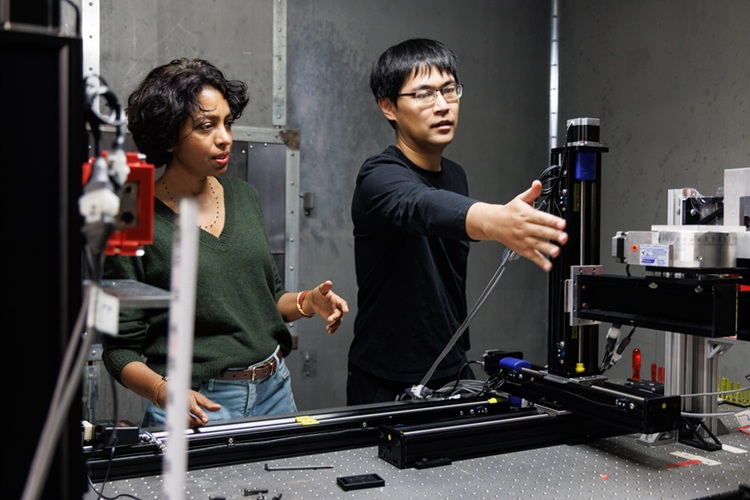
X-Ray Breakthrough Captures Three Image-Contrast Types in Single Shot
Detecting early-stage cancer or subtle changes deep inside tissues has long challenged conventional X-ray systems, which rely only on how structures absorb radiation. This limitation keeps many microstructural... Read more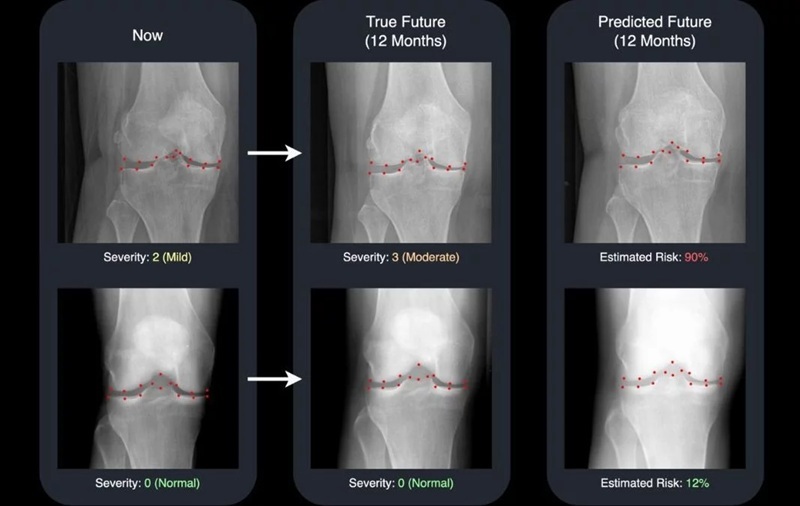
AI Generates Future Knee X-Rays to Predict Osteoarthritis Progression Risk
Osteoarthritis, a degenerative joint disease affecting over 500 million people worldwide, is the leading cause of disability among older adults. Current diagnostic tools allow doctors to assess damage... Read moreMRI
view channel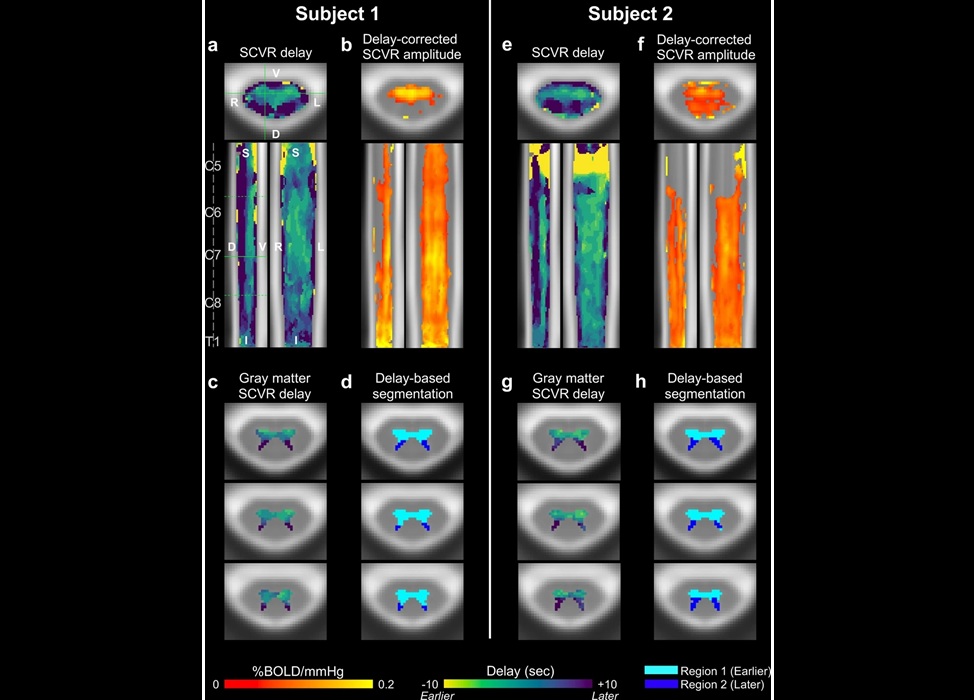
Novel Imaging Approach to Improve Treatment for Spinal Cord Injuries
Vascular dysfunction in the spinal cord contributes to multiple neurological conditions, including traumatic injuries and degenerative cervical myelopathy, where reduced blood flow can lead to progressive... Read more
AI-Assisted Model Enhances MRI Heart Scans
A cardiac MRI can reveal critical information about the heart’s function and any abnormalities, but traditional scans take 30 to 90 minutes and often suffer from poor image quality due to patient movement.... Read more
AI Model Outperforms Doctors at Identifying Patients Most At-Risk of Cardiac Arrest
Hypertrophic cardiomyopathy is one of the most common inherited heart conditions and a leading cause of sudden cardiac death in young individuals and athletes. While many patients live normal lives, some... Read moreUltrasound
view channel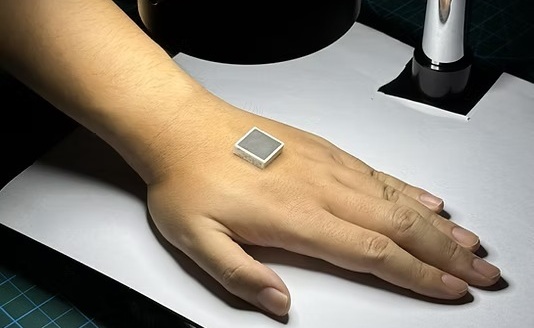
Wearable Ultrasound Imaging System to Enable Real-Time Disease Monitoring
Chronic conditions such as hypertension and heart failure require close monitoring, yet today’s ultrasound imaging is largely confined to hospitals and short, episodic scans. This reactive model limits... Read more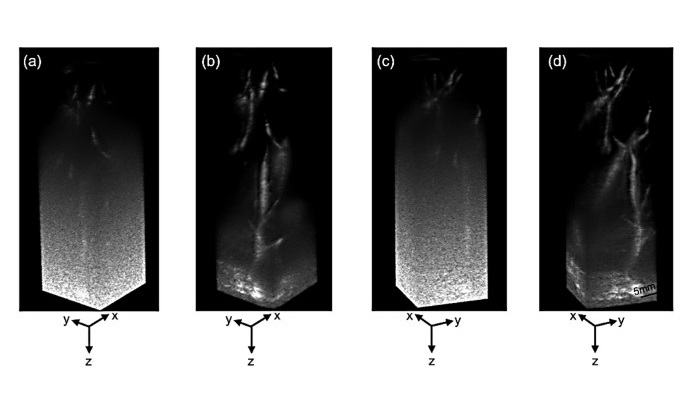
Ultrasound Technique Visualizes Deep Blood Vessels in 3D Without Contrast Agents
Producing clear 3D images of deep blood vessels has long been difficult without relying on contrast agents, CT scans, or MRI. Standard ultrasound typically provides only 2D cross-sections, limiting clinicians’... Read moreGeneral/Advanced Imaging
view channel
3D Scanning Approach Enables Ultra-Precise Brain Surgery
Precise navigation is critical in neurosurgery, yet even small alignment errors can affect outcomes when operating deep within the brain. A new 3D surface-scanning approach now provides a radiation-free... Read more
AI Tool Improves Medical Imaging Process by 90%
Accurately labeling different regions within medical scans, a process known as medical image segmentation, is critical for diagnosis, surgery planning, and research. Traditionally, this has been a manual... Read more
New Ultrasmall, Light-Sensitive Nanoparticles Could Serve as Contrast Agents
Medical imaging technologies face ongoing challenges in capturing accurate, detailed views of internal processes, especially in conditions like cancer, where tracking disease development and treatment... Read more
AI Algorithm Accurately Predicts Pancreatic Cancer Metastasis Using Routine CT Images
In pancreatic cancer, detecting whether the disease has spread to other organs is critical for determining whether surgery is appropriate. If metastasis is present, surgery is not recommended, yet current... Read moreImaging IT
view channel
New Google Cloud Medical Imaging Suite Makes Imaging Healthcare Data More Accessible
Medical imaging is a critical tool used to diagnose patients, and there are billions of medical images scanned globally each year. Imaging data accounts for about 90% of all healthcare data1 and, until... Read more
Global AI in Medical Diagnostics Market to Be Driven by Demand for Image Recognition in Radiology
The global artificial intelligence (AI) in medical diagnostics market is expanding with early disease detection being one of its key applications and image recognition becoming a compelling consumer proposition... Read moreIndustry News
view channel
GE HealthCare and NVIDIA Collaboration to Reimagine Diagnostic Imaging
GE HealthCare (Chicago, IL, USA) has entered into a collaboration with NVIDIA (Santa Clara, CA, USA), expanding the existing relationship between the two companies to focus on pioneering innovation in... Read more
Patient-Specific 3D-Printed Phantoms Transform CT Imaging
New research has highlighted how anatomically precise, patient-specific 3D-printed phantoms are proving to be scalable, cost-effective, and efficient tools in the development of new CT scan algorithms... Read more
Siemens and Sectra Collaborate on Enhancing Radiology Workflows
Siemens Healthineers (Forchheim, Germany) and Sectra (Linköping, Sweden) have entered into a collaboration aimed at enhancing radiologists' diagnostic capabilities and, in turn, improving patient care... Read more













